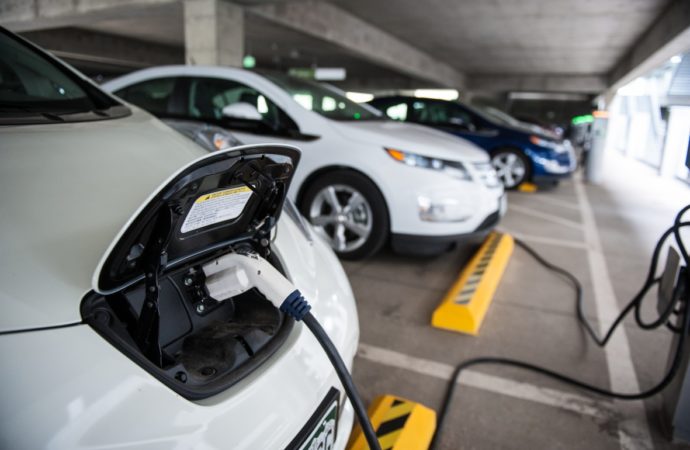Policymakers at both the national and state levels are making a concerted effort to encourage the widespread adoption of electric vehicles among the general public.
Here in Colorado, the Polis administration has set a goal of having 940,000 EVs on the road by 2030 as part of its plan to electrify the state’s transportation sector (there are currently around 61,000 registered EVs in Colorado).
It has authorized tax credits meant to subsidize demand for EVs, which cost on average $10,000 more than their gas-powered counterparts and have seen their costs spike in recent months due to raw materials inflation.
The administration even voted to adopt California’s Zero Emissions Vehicle (ZEV) mandate, which took effect in January of this year. The rule stipulates that automakers must now make an increasing minimum percentage of ZEV sales each year as part of their light-duty fleet (8,500 pounds GVWR). Should they fail to meet the quotas, automakers will be required to buy credits from others that have banked them.
However, a new study from consumer research firm J.D. Power calls into question the micromanaging strategy of Colorado lawmakers who appear to be putting the cart before the horse in subsidizing EV take up. In its latest U.S. Electric Vehicle Experience (EVX) Public Charging Study, the firm finds lack of reliable public charging to be a major barrier to consumer satisfaction among EV owners.
According to J.D. Power:
The growth of electric vehicle (EV) sales during the past year has been remarkable but has added stress to an already beleaguered public vehicle charging infrastructure. In this growth spurt, owners in high EV volume markets like California, Texas and Washington, for instance, are finding the charging infrastructure inadequate and plagued with non-functioning stations.
Despite that more public charging stations are in operation than ever before, customer satisfaction with public Level 2 charging declined from last year, dropping to 633 (on a 1,000-point scale) from 643 in 2021, while satisfaction with the speedier DC (direct current) fast charger segment remains flat at 674. This lack of progress points to the need for improvement as EVs gain wider consumer acceptance because the shortage of public charging availability is the number one reason vehicle shoppers reject EVs.
In addition to inconsistent availability of charging stations, many consumers find that when they do encounter a charging station, it simply does not work.
The industry needs to do a better job of maintaining existing charging stations. The study finds that one out of every five respondents ended up not charging their vehicle during their visit. Of those who didn’t charge, 72% indicated that it was due to the station malfunctioning or being out of service.
And lest anyone think the findings were simply the result of EV cynics living in recalcitrant states with inadequate support for EV infrastructure, the study found some of highest rates of dissatisfaction in EV-friendly California—the state Colorado seeks to emulate on zero-emissions vehicle policy.
Led by California, the Pacific region has the highest number of public chargers. At the same time, it has the highest concentration of EV owners, yet they are not as satisfied with the availability and condition of public chargers as EV owners in some other geographic areas.
The findings highlight what should be a major consideration for policymakers on the current limitations of electric vehicles. While most modern EVs work quite well for daily commuting needs, significant barriers still exist in making electric vehicles as convenient as gas-powered vehicles for any sort of extended driving trip.
For a detailed account of the perils associated with the current consumer experience with public EV charging options, see this Wall Street Journal report from a few months back ominously titled “I Rented an Electric Car for a Four-Day Road Trip. I Spent More Time Charging It Than I Did Sleeping.”
Solutions to Consider
While many of the kinks associated with EVs and EV charging options will eventually be improved upon through private sector innovation, government policymakers can take certain steps to help.
For instance, government regulators should reject efforts by monopoly-utilities to lead the way in deploying electric vehicle chargers.
Colorado regulators have already erred in this thus far by authorizing a $110 million plan from Xcel Energy last year that will, among other things, allow the utility to build 20,000 public charging stations.
Such an arrangement shields the true costs associated with charging by socializing them across a captive rate base, and it heads off efforts to develop a competitive market among truly innovative private firms.
Because utilities operate under a model of guaranteed fixed profit shielded from competition, they have less of an incentive to maintain and upgrade outdated chargers, leading to issues like the ones identified in the J.D. Power study.
When private firms are given the opportunity to compete over charging installations, with the success of their business guaranteed only by the strength of their technology and service offerings, they are incentivized to keep those chargers working with regularity. They also have an incentive to install the latest and most efficient offerings, as faster charging allows the firm to serve a greater number of drivers.
It’s no mistake that the J.D. Power study found that EV drivers responded most favorably to Tesla charging stations across all levels of charging options:
Tesla Destination ranks highest among Level 2 charge point operators with a score of 680 and Tesla Supercharger ranks highest among DC fast chargers with a score of 739.
Markets work.
Policymakers should reconsider subsidizing the demand for EVs before the associated infrastructure is ready for prime time, and they should certainly reconsider allowing monopoly utilities to include EV chargers among the list of expenses to be socialized among a captive rate base.
Let private actors respond to market incentives and continue to innovate new ways to improve the EV experience. If successful, the demand will be there organically without the need for any taxpayer or ratepayer funded giveaways.









